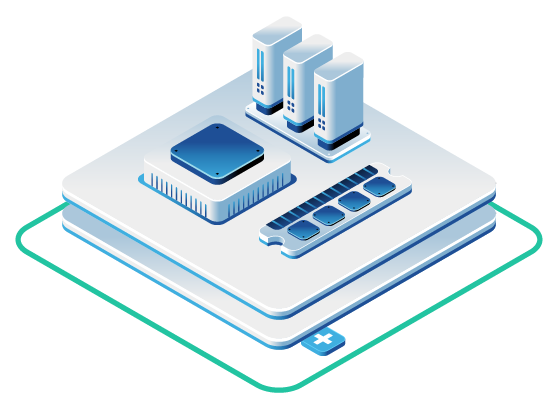In this article
- Understanding Multi-Site High Availability Requirements
- Why Geographic Distribution Matters for Enterprise Infrastructure
- Measuring Availability: What Five Nines Really Means
- OpenStack Architecture for Multi-Site Deployments
- Networking Strategies for Cross-Region Communication
- Storage Replication With Ceph RBD Mirroring
- Failover Strategies for Different Workload Requirements
- Infrastructure as Code for Consistent Multi-Site Deployments
- Hardware Diversity for Production Workloads
- Monitoring and Observability Across Sites
- Cost Considerations for Multi-Site Infrastructure
- Security and Compliance Across Geographic Boundaries
- Real-World Multi-Site Architecture Patterns
- Implementing Your Multi-Site Strategy
- Choosing the Right Platform for Your HA Requirements
- Next Steps for Building Resilient Infrastructure
When your business depends on systems that cannot go down, you need more than traditional cloud services. You need infrastructure designed from the ground up for continuous operation across multiple geographic locations.
Multi-site high availability isn’t just about having backup servers. It’s about building resilient architectures that maintain service delivery during hardware failures, network outages, natural disasters, and unexpected traffic surges. For infrastructure teams managing mission-critical applications, the question isn’t whether failures will occur (they will!), it’s how quickly your systems recover when they do.
Understanding Multi-Site High Availability Requirements
High availability architectures ensure your systems remain operational and accessible to users, even when individual components fail. HA architecture minimizes downtime and allows systems to recover quickly from failures, reducing impact on both users and business operations.
The foundation of any HA strategy rests on several core principles:
Redundancy eliminates single points of failure by deploying multiple instances of critical components across different locations. When one component fails, others immediately assume its workload without service interruption.
Failover mechanisms automatically switch to backup systems when primary components become unavailable. This process happens transparently to end users, maintaining continuous service delivery.
Geographic distribution protects against localized failures such as power outages, natural disasters, or regional network issues. Spreading resources across multiple data centers ensures that problems in one location don’t bring down your entire infrastructure.
Data replication keeps information synchronized across sites, allowing any location to serve requests with current data. This synchronization must happen quickly enough to prevent inconsistencies while maintaining acceptable performance.
The difference between high availability and disaster recovery is important to understand. HA focuses on continuous operation of specific systems or applications, while disaster recovery centers on restoring critical business operations after catastrophic events. Your infrastructure needs both strategies working together.
Why Geographic Distribution Matters for Enterprise Infrastructure
Traditional cloud providers often charge large data transfer fees for cross-region traffic, which creates a financial disincentive for proper multi-site architectures. These egress costs can make true geographic redundancy prohibitively expensive, forcing compromise on availability requirements.
Location matters when milliseconds count. Users in Singapore expect different latency profiles than users in Virginia. Your infrastructure should reflect the geographic distribution of your customer base and compliance requirements.
OpenMetal operates Tier III data centers in four strategic locations: Ashburn VA (US East), Los Angeles CA (US West), Amsterdam Netherlands (EU), and Singapore (APAC). All facilities provide N+1 power and cooling redundancy, multiple Tier-1 carrier connectivity, and meet enterprise uptime requirements.
Measuring Availability: What Five Nines Really Means
Availability targets aren’t arbitrary numbers. They represent real business impact measured in minutes of downtime per year.
Industry standard availability metrics translate to specific downtime windows:
Three nines (99.9% availability) allows for less than 8.76 hours of downtime annually. For many businesses, this represents an acceptable baseline.
Four nines (99.99% availability) reduces acceptable downtime to less than 52.56 minutes per year. This level typically requires redundant components and automated failover.
Five nines (99.999% availability) permits less than 5.26 minutes of downtime annually. Achieving this target demands sophisticated multi-site architectures with automated recovery mechanisms.
You calculate availability using the formula: Availability = MTBF / (MTBF + MTTR), where MTBF represents mean time between failures and MTTR represents mean time to repair. Maximizing MTBF while minimizing MTTR forms the foundation of meeting availability objectives.
The business cost of unavailability extends beyond immediate revenue loss. An e-commerce site generating $100,000 daily loses $4,166.67 per hour of downtime. But the disruption often outlasts the outage itself. Spending days catching up on shipping, refunds, and customer service, without accounting for reputation damage or lost future orders.
OpenStack Architecture for Multi-Site Deployments
OpenStack provides the orchestration foundation for distributed infrastructure. As detailed in OpenMetal’s HA infrastructure guide, OpenStack offers orchestration and automation capabilities that reduce human error while improving reliability of HA systems.
OpenStack’s architecture supports several deployment patterns for multi-site scenarios:
Active-active configurations distribute live traffic across multiple regions simultaneously. Each site handles production workloads, providing both geographic distribution and load balancing. This pattern maximizes resource utilization while delivering the lowest latency to users in different regions.
Active-passive deployments maintain a hot standby site that continuously replicates data but doesn’t serve production traffic until failover occurs. The passive site remains ready to assume full workload within minutes of detecting primary site failure.
Distributed active sites with storage replication combine regional compute resources with synchronized storage layers. Applications run independently in each region while sharing replicated data stores.
OpenMetal deploys hosted private clouds in 45 seconds with a 3-node hyper-converged architecture that includes integrated Ceph storage. Each deployment provides full root access to both the OpenStack control plane and Ceph cluster, enabling infrastructure teams to configure custom disaster recovery and replication strategies that hyperscalers don’t permit.
The platform scales horizontally by adding bare metal servers to existing clouds in approximately 20 minutes. Multi-cloud deployments across regions maintain centralized management through OpenStack APIs while preserving geographic distribution.
Networking Strategies for Cross-Region Communication
Multi-site architectures require secure, high-bandwidth connectivity between locations. Without proper networking, replication lag and data inconsistency undermine availability objectives.
For multi-site networking, OpenMetal provides dedicated VLANs for every tenant with VXLAN overlay support. Each server includes dual 10Gbps NICs providing 20Gbps total dedicated private bandwidth that is completely unmetered. This private connectivity enables cross-region replication, Ceph storage synchronization, and VPN interconnects between sites without data transfer charges.
OpenStack’s native VPNaaS supports site-to-site IPsec VPN with configurable IKE and IPsec policies for encrypted inter-region communication. This creates secure tunnels between data centers, protecting replication traffic from interception while maintaining low latency.
Load balancers distribute incoming traffic across multiple servers, preventing any single system from becoming overloaded. They proxy connections for application servers and route traffic based on specialized algorithms, health checks, and geographic proximity.
Network IP management provides the ability to move published service IPs between machines during failures. Two servers monitor each other, and if one becomes unavailable, the secondary assumes the roles and processes of the failed server. This self-healing process maintains business continuity during infrastructure transitions.
Storage Replication With Ceph RBD Mirroring
Storage-level replication forms the foundation of data durability in multi-site architectures. Your application may run in multiple locations, but if the underlying data isn’t consistently replicated, you haven’t achieved true high availability.
Ceph storage supports RBD mirroring for disaster recovery with both journal-based and snapshot-based replication modes. Journal-based mirroring provides near real-time replication by continuously streaming changes to remote clusters. Snapshot-based mirroring offers periodic consistency points with lower overhead for workloads that tolerate slightly longer recovery point objectives.
Organizations can replicate between OpenMetal clouds across different regions or to external Ceph clusters. Full root access allows tuning of replication parameters, min_size settings, and recovery objectives based on specific application requirements.
Ceph’s architecture provides fault tolerance through its distributed design and self-healing capabilities. It automatically recovers from node failures, disk failures, and network outages. Data redundancy through replication and erasure coding protects against data loss even when multiple components fail simultaneously.
Multi-site RGW (RADOS Gateway) configurations provide S3-compatible object storage with geographic replication. This allows applications to use familiar object storage APIs while benefiting from automatic replication across data centers.
For mission-critical data, you should understand the consistency model Ceph provides. The platform balances strong consistency within clusters with configurable consistency models for cross-region replication, allowing you to tune the tradeoff between data freshness and replication performance.
Failover Strategies for Different Workload Requirements
Different applications require different failover approaches. A stateless web application tolerates different failure modes than a stateful database cluster.
The infrastructure supports various failover strategies:
Manual failover gives complete control over the recovery process. Operations teams validate backup system readiness before switching traffic. This approach works well for planned maintenance or situations requiring careful validation before cutover.
Automatic failover systems continuously monitor component health and trigger recovery procedures without human intervention. Automated failover provides faster recovery, better reliability, and reduced need for human oversight, though it requires more complex configuration and carries risk of false positives.
Planned failover involves pre-scheduled events that test backup systems and ensure readiness. Regular failover testing identifies configuration issues before they impact actual failure scenarios. You improve system resilience while validating that your recovery procedures actually work.
Application-level routing allows cloud-aware applications to intelligently route transactions to secondary service points when primary systems fail. Well-architected applications can resubmit failed transactions to backup infrastructure completely transparently to end users.
Storage-level replication using Ceph RBD mirroring operates independently of application-layer failover. This separation of concerns allows you to fail over compute resources to different regions while maintaining access to synchronized storage.
Infrastructure as Code for Consistent Multi-Site Deployments
Managing multiple sites manually introduces configuration drift and human error. Infrastructure as code practices ensure consistency across regions while enabling rapid deployment and recovery.
OpenStack Heat orchestration enables infrastructure-as-code deployment patterns across multiple sites. Heat templates define entire application stacks—compute instances, networks, storage volumes, security groups—in declarative format. You deploy identical infrastructure in multiple regions by applying the same templates to different OpenStack endpoints.
Configuration management systems serve as central repositories for infrastructure and application management. When deployed properly, CMS platforms can remotely execute code, automatically orchestrate resources, and dynamically provision servers or entire infrastructures. This capability significantly improves both MTBF and MTTR.
Automated provisioning dramatically reduces recovery time objectives. In catastrophic failure scenarios, you redeploy entire application infrastructures to secondary locations in minutes. Data replication ensures information availability in the secondary location, while just-in-time deployment of application stacks measures in minutes rather than hours.
OpenStack backup automation tools integrate with infrastructure as code workflows. Regular snapshots of compute instances and volume backups provide additional recovery points beyond real-time replication.
Hardware Diversity for Production Workloads
Not all workloads have identical resource requirements. Multi-site architectures need flexibility to deploy appropriate hardware for specific application needs while maintaining consistent management interfaces.
Hardware options include standard configurations plus GPU servers (A100/H100) for AI and machine learning workloads, high-memory XL/XXL configurations for in-memory databases and analytics, and NVMe storage clusters for latency-sensitive applications requiring consistent sub-millisecond access times.
Bare metal servers offer predictable performance without virtualization overhead. You control the complete hardware configuration, allowing workload-specific optimizations. Reduced latency and improved security come from eliminating the hypervisor layer.
For maximum data protection, servers can deploy dual boot drives in RAID 1 configuration. This hardware-level redundancy protects against boot device failure, ensuring systems remain accessible even when individual drives fail.
Monitoring and Observability Across Sites
You can’t manage what you don’t measure. Multi-site infrastructures require comprehensive monitoring that tracks component health, replication lag, network latency, and application performance across all locations.
Infrastructure monitoring provides critical insight into application infrastructures at detailed levels. Alerts can trigger automated self-healing tasks and automatically open support tickets, enabling rapid response to emerging issues.
Transaction-level monitoring allows applications to identify failed or non-responsive components and recover through predetermined processes. Web and application servers can be monitored based on expected response patterns and transactional latency. Integration with backend automation systems enables automatic responses such as restarting server processes, scaling resources, or rebuilding degraded systems from templates.
Database monitoring tracks replication lag across sites, identifying when replica clusters fall behind primary systems. When using asynchronous replication, understanding lag metrics helps you assess whether recovery point objectives remain within acceptable bounds.
Network monitoring reveals bandwidth saturation, packet loss, and latency increases that could impact replication or user experience. Continuous health checks across interconnected sites provide early warning of degrading conditions before they trigger complete failures.
Cost Considerations for Multi-Site Infrastructure
Traditional cloud pricing models penalize multi-site architectures through data transfer charges. Every gigabyte replicated between regions incurs egress fees, creating ongoing operational expenses that scale with data volume.
Fixed monthly pricing per server eliminates concerns about cross-region data transfer costs that would otherwise constrain multi-site architectures on metered cloud platforms. This predictable cost structure allows you to architect for availability without worrying that replication traffic will generate unexpected bills.
The economic model shifts from variable operational expenses to fixed capacity planning. You pay for servers, not for bytes transferred between them. This pricing approach aligns with the actual operational costs of running multi-site infrastructure while removing financial barriers to proper redundancy.
Cost analysis of disaster recovery implementations shows that cloud infrastructures can provide redundancy at significantly lower cost than dedicated alternatives. Shared costs of high availability routing, switching, load balancing, and hypervisors distribute across the entire platform.
However, tradeoffs exist based on specific requirements. Some workloads need consistent high network and disk performance that may require specialized configurations. Custom load balancing or firewall equipment might necessitate hybrid approaches.
Security and Compliance Across Geographic Boundaries
Multi-site infrastructure introduces compliance complexity. Different regions have different data residency requirements, privacy regulations, and security standards.
Data sovereignty regulations may require that certain information remains within specific geographic boundaries. Healthcare data in the EU must comply with GDPR, while financial services data in the US faces different regulatory frameworks. Multi-site architectures need to enforce data location policies through technical controls, not just operational procedures.
Encryption in transit protects replication traffic between sites. IPsec VPN tunnels ensure that data moving between data centers remains confidential even when traversing public networks. Encryption at rest protects stored data from unauthorized access in the event of physical security breaches.
Access control becomes more complex when infrastructure spans multiple locations. Identity and access management systems must provide consistent authentication and authorization across sites while accounting for potential network partitions. OpenStack’s disaster recovery capabilities include identity federation features that maintain security controls during failover scenarios.
Real-World Multi-Site Architecture Patterns
Understanding abstract concepts helps, but seeing how pieces fit together clarifies implementation decisions. Different organizations need different patterns based on their specific availability requirements and budget constraints.
E-commerce platforms benefit from active-active deployments with local data caching. Each region serves customers with the lowest latency while synchronizing inventory and order data across sites. When one region experiences issues, the load balancer redirects traffic to healthy sites without customer-visible interruption.
Financial services applications often require active-active configurations with synchronous replication for critical transaction data. The consistency requirements of financial transactions demand that all sites maintain identical states. While this approach introduces latency overhead, it prevents data inconsistencies that could result in compliance violations or financial losses.
Content delivery architectures deploy compute resources close to users while centralizing storage in primary regions with asynchronous replication to edge locations. Static assets cache at edge sites for fast delivery, while dynamic content generation happens in regions with sufficient compute capacity.
Development and staging environments can use OpenMetal clouds for disaster recovery testing without impacting production systems. Testing failover procedures in isolated environments validates recovery processes before you need them in production.
Kubernetes deployments across OpenStack require specialized networking approaches that maintain pod communication across regions. Container orchestration adds another layer of abstraction above infrastructure failover, allowing application-level high availability that operates independently of underlying infrastructure changes.
Implementing Your Multi-Site Strategy
Building multi-site infrastructure requires methodical planning and phased implementation. Attempting to deploy complete redundancy across multiple regions simultaneously often leads to configuration errors and incomplete testing.
Start by documenting current availability requirements and measuring existing uptime. Understanding your baseline helps you set realistic improvement targets and justify infrastructure investment.
Phase 1: Local redundancy implements redundant components within a single data center. Deploy multiple web servers behind load balancers, set up database replication within the region, and configure automated failover for critical components. This phase establishes operational patterns that extend to multi-site deployments.
Phase 2: Storage replication extends data durability across sites. Configure Ceph RBD mirroring between regions, validate replication lag metrics, and test recovery procedures. Ensure that storage-level failover works correctly before adding compute-layer complexity.
Phase 3: Compute distribution deploys application infrastructure in secondary regions. Use infrastructure as code to maintain configuration consistency, implement cross-region networking, and configure DNS-based traffic management.
Phase 4: Active-active operation transitions from standby secondary sites to live multi-region deployment. Configure geographic load balancing, tune replication parameters for acceptable latency, and implement monitoring that tracks performance across all sites.
Phase 5: Operational validation involves regular failover testing under controlled conditions. Schedule planned failover events quarterly, document recovery procedures, and measure actual recovery time against objectives. Creating comprehensive backups provides additional recovery points beyond real-time replication.
Each phase builds on previous work while delivering measurable availability improvements. This incremental approach reduces risk compared to attempting everything simultaneously.
Choosing the Right Platform for Your HA Requirements
Infrastructure decisions have long-term implications. Migrating between platforms after deployment involves significant effort and risk, making the initial choice particularly important.
Traditional hyperscalers optimize for different use cases than dedicated infrastructure. They excel at elastic scaling for variable workloads but introduce complexity and cost for multi-site architectures. Data transfer fees, limited infrastructure control, and proprietary management tools create dependencies that constrain architectural flexibility.
Hosted private clouds provide infrastructure control similar to on-premises deployment while eliminating hardware management burden. You maintain root access to OpenStack control planes and Ceph clusters, enabling disaster recovery configurations that match specific requirements rather than adapting to provider constraints.
The combination of geographic distribution, unmetered private networking, and fixed pricing creates an economic model that supports proper redundancy without financial penalties for cross-region traffic. Infrastructure teams can architect for availability based on technical requirements rather than optimizing to minimize data transfer costs.
Your multi-site strategy needs infrastructure that supports it rather than fighting against it. Platform choice determines whether achieving five nines availability requires expensive workarounds or straightforward configuration.
Next Steps for Building Resilient Infrastructure
Multi-site high availability represents a journey rather than a destination, just like the cloud itself! As your applications evolve and your availability requirements increase, infrastructure capabilities must grow accordingly.
Begin by assessing your current availability posture. Measure actual uptime, document failure modes, and understand the business impact of outages. This baseline informs improvement priorities and helps you communicate infrastructure needs to stakeholders.
Design your target architecture before implementing changes. Consider workload requirements, data residency constraints, and acceptable recovery time objectives. Validate that your chosen platform supports the architectural patterns you need.
Test failover procedures regularly. Documented recovery processes that haven’t been validated in practice often fail when needed most. Schedule planned failover events, measure actual recovery times, and refine procedures based on results.
OpenMetal’s infrastructure supports multi-site high availability requirements through geographic distribution, unmetered private networking, full platform access, and predictable pricing. The platform eliminates technical and financial barriers to proper redundancy while maintaining the control necessary for custom disaster recovery strategies.
Your mission-critical applications deserve infrastructure designed for continuous operation. Multi-site high availability isn’t optional for systems that cannot tolerate downtime—it’s the foundation of reliable service delivery.
Schedule a Consultation
Get a deeper assessment and discuss your unique requirements.
Read More on the OpenMetal Blog


































